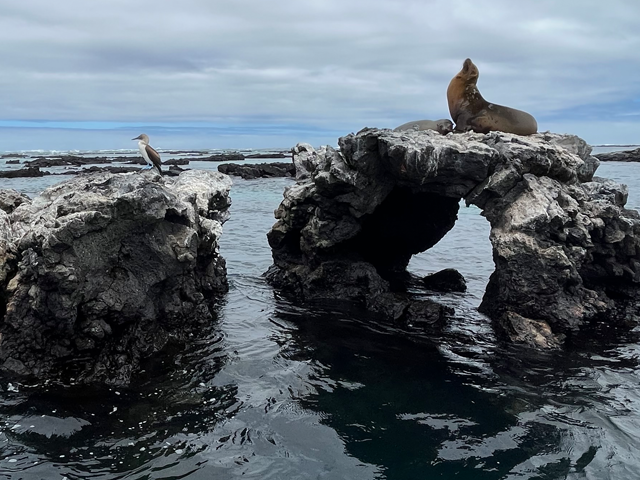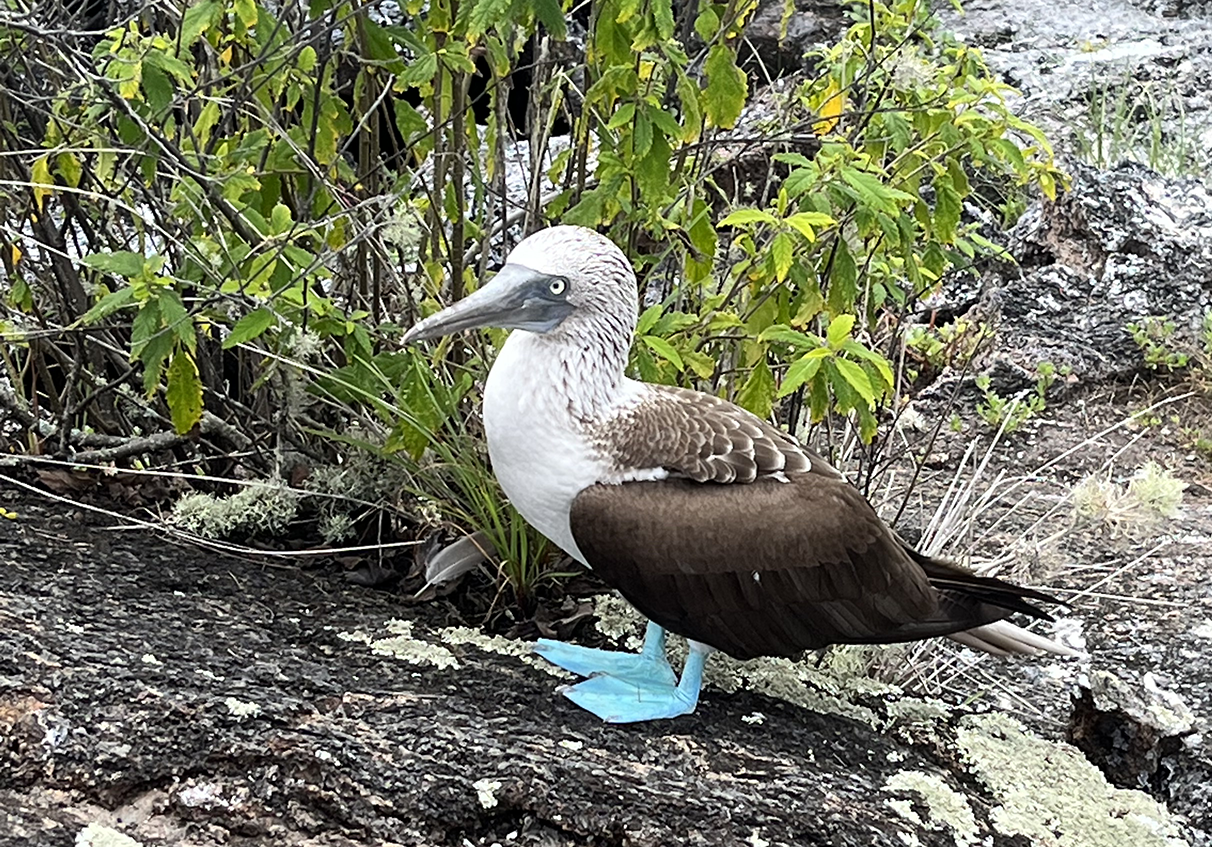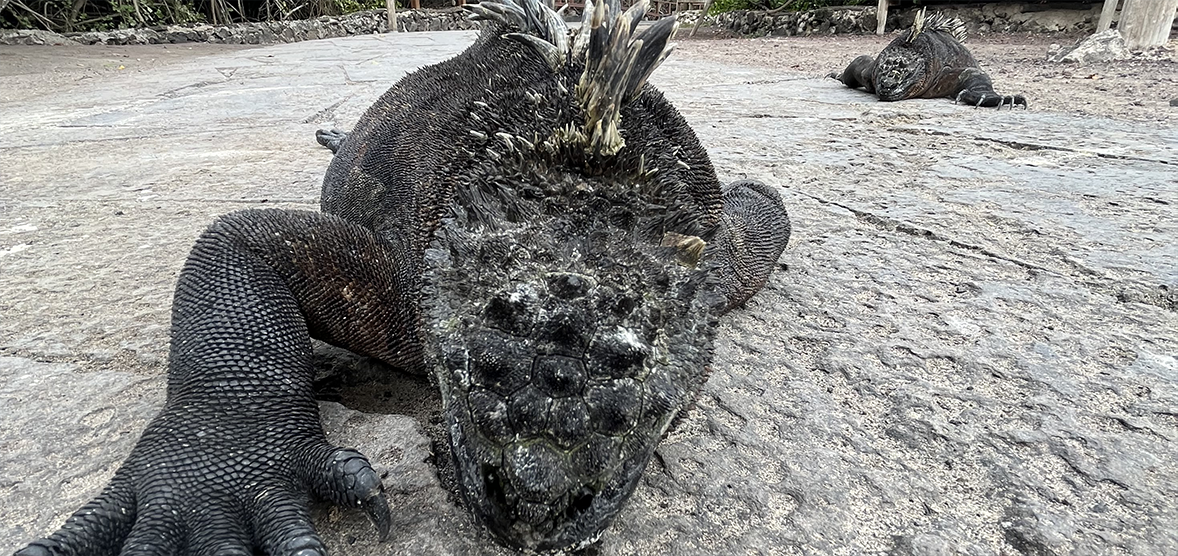Hello my friends. I’m writing today from the Galapagos islands. I came here with my friend Emilie from Canada. It really is out of this world. It’s been a couple days since we arrive. We are staying with a friend of mine that’s been living here for almost 3 years. He studied biology and works for an NGO. I’ll keep his name out of here since the information he provided might get him in trouble.
Cannabis is still pretty much illegal in Ecuador and bringing foreign plants to the island is specially prohibited by the law. To try to keep Galapagos species out of harm the government takes special precautions about the stuff you can bring to the islands. Basically, here is what you need to know about cannabis in Latin America and Ecuador:
“The cannabis market, offering an array of diverse products, is split between recreational and medicinal use. While medicinal use is more widely permitted, the share of recreational (or “adult”) use of cannabis spending is expected to grow, alongside increasing tolerance and formal legalization worldwide. In Latin America and the Caribbean, for instance, the market value of legal recreational cannabis is expected to skyrocket in the early 2020s, reaching approximately 300 million U.S. dollars by 2024.”[1]
[1] Statista Research Department, (2021, Sep 28) “Cannabis in Latin America – statistics & facts”. Statista. https://www.statista.com/topics/6801/cannabis-in-latin-america/#topicHeader__wrapper
Cannabis is illegal in Ecuador, but… only if it has THC in it. How is that possible you might be wondering?
Turns out CBD is legal in Ecuador since December 2020 and there are legal ways to acquire licenses to grow and sell cannabis. Congress approved the use of cannabis for medicinal use and made a reform to the Comprehensive Criminal Organic Code (COIP) for its Spanish acronym. Before 2013, the legislation on cannabis in Ecuador was strict, hardly differentiating between occasional consumers and large-scale traffickers, overcrowding prisons. Thanks to human rights advocates, the law changed and personal cannabis use (up to 10g) was decriminalized, allowing limited personal cultivation.
“The law allows consumption and does not consider it a crime, but the cultivation, trafficking and sale of small or large quantities [of drugs] remain illegal.” “According to the Constitution (article 364), Ecuador do not penalize drug use. The country consider that it is a health problem and not a crime.” (Law 108)[1]
[1] The Law on Narcotic and Psychotropic Substances (Law 108) is the current law that is in the process of being replaced. This is the law that regulated drugs in Ecuador and its objective was to “combat and eradicate the production, supply, improper use and illicit trafficking of narcotic and psychotropic substances”. The judicial aspects of Law 108 became the main means that allowed the Ecuadorian security forces to implement measures financed by US drug control assistance.
This produced a massive change towards the acceptance and development of the cannabis market since: “The possession or possession of drugs that contain the active ingredient of cannabis or derivatives for therapeutic, palliative, medicinal purposes or for the exercise of alternative medicine in order to guarantee health, will not be punishable, provided that the suffering of a disease is proven. disease through professional diagnosis.”[1]
Anyhow, Galapagos has captivated visitors since Charles Darwin stepped ashore in 1835. Forged of lava and isolated for thousands of years, it is a world unto itself. Cannabis can be cultivated locally and the Charles Darwin Foundation shows that Cannabis indica Lam was introduced and can be found in the Santa Cruz Island.[2] This is explained by Christophe Grenier as:
[1] Asamblea Nacional (2021, Feb 03) “CÓDIGO ORGÁNICO INTEGRAL PENAL, COIP”. COIP_act_feb-2021. https://www.defensa.gob.ec/wp-content/uploads/downloads/2021/03/COIP_act_feb-2021.pdf
[2] CDF (2010) “Galapagos Species Checklist”. Charles Darwin Foundation. https://www.darwinfoundation.org/en/datazone/checklist?species=1971
“There is cannabis grown locally for self-consumption in hidden lands isolated from the gaze of curious people. Most of the marijuana consumed on the islands comes from the mainland and is brought on TAME airline flights by the island’s inhabitants”[1]
[1] Grenier, C. (2007). Conservación contra natura. Las islas Galápagos. Instituto Francés de Estudios Andinos (IFEA)y Abya-Yala, Quito.
This produced a massive change towards the acceptance and development of the cannabis market since: “The possession or possession of drugs that contain the active ingredient of cannabis or derivatives for therapeutic, palliative, medicinal purposes or for the exercise of alternative medicine in order to guarantee health, will not be punishable, provided that the suffering of a disease is proven. disease through professional diagnosis.”[1]
Anyhow, Galapagos has captivated visitors since Charles Darwin stepped ashore in 1835. Forged of lava and isolated for thousands of years, it is a world unto itself. Cannabis can be cultivated locally and the Charles Darwin Foundation shows that Cannabis indica Lam was introduced and can be found in the Santa Cruz Island.[2] This is explained by Christophe Grenier as:
[1] Asamblea Nacional (2021, Feb 03) “CÓDIGO ORGÁNICO INTEGRAL PENAL, COIP”. COIP_act_feb-2021. https://www.defensa.gob.ec/wp-content/uploads/downloads/2021/03/COIP_act_feb-2021.pdf
[2] CDF (2010) “Galapagos Species Checklist”. Charles Darwin Foundation. https://www.darwinfoundation.org/en/datazone/checklist?species=1971
“There is cannabis grown locally for self-consumption in hidden lands isolated from the gaze of curious people. Most of the marijuana consumed on the islands comes from the mainland and is brought on TAME airline flights by the island’s inhabitants”[1]
[1] Grenier, C. (2007). Conservación contra natura. Las islas Galápagos. Instituto Francés de Estudios Andinos (IFEA)y Abya-Yala, Quito.


